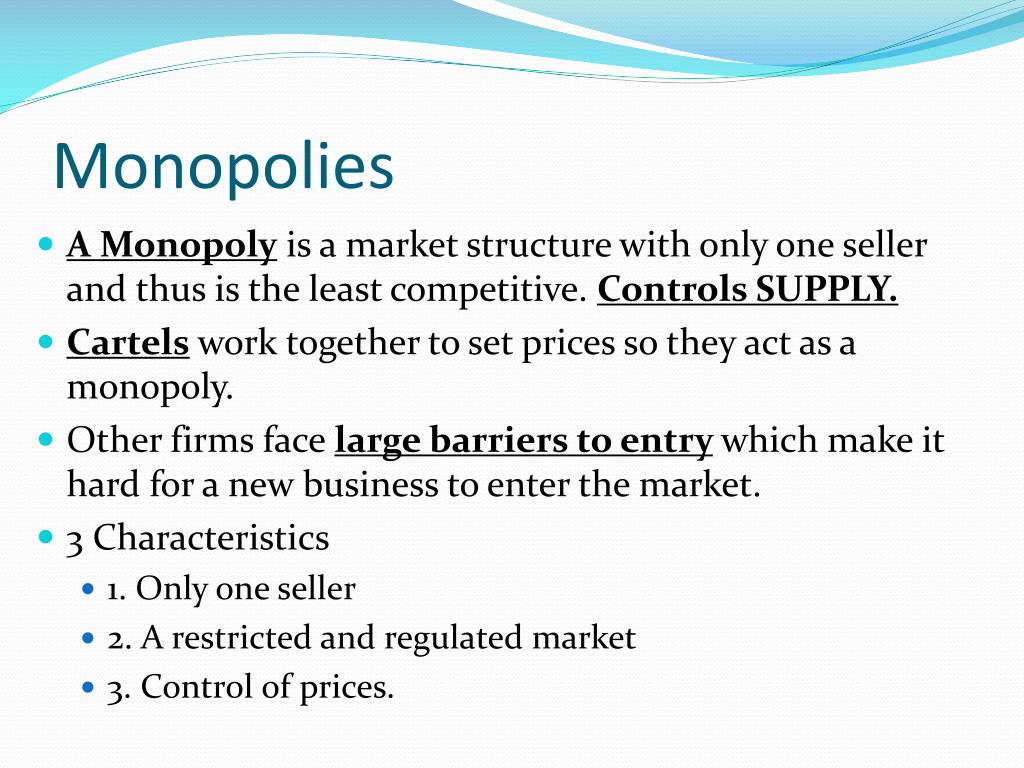

De Beers would then be a monopolist by definition. We could define the market very narrowly as “De Beers-branded diamonds” (De Beers is able to brand its diamonds by using certificates of authenticity). Yet, depending on how broadly or narrowly we define the market, De Beers has either a lot of competitors or only a few. It is often said that the De Beers Corporation is a monopolist in the market for diamonds because this company controls most of the world’s diamond supply. The definition of a monopoly seems easy, yet it is hard to decide exactly what we mean by “a market.” Think about diamonds. The demand curve facing a firm is, in this case, the same as the market demand curve The number of units of a good or a service demanded at each price. A monopoly arises when there is a single producer in a market. In a competitive market, the demand curve facing a firm is perfectly elastic at the market price, whereas when a firm has market power, its demand curve slopes downward.Īt the other extreme to the competitive market is the case of monopoly A single supplier of a good or service in a market. This means, in particular, that they are able to set a price above marginal cost without losing all of their sales. In most markets, firms possess some market power. But very few markets are truly competitive. The competitive market provides a benchmark because it leads to an efficient outcome. Producing less output would likewise lower total surplus because the buyers and the sellers would lose some of their surplus. In fact, producing more output would reduce the surplus: the marginal cost of producing more output would exceed the marginal valuation of extra output. Producing more output would not increase the total surplus. This is shown as seller surplus in the figure.Īt the equilibrium quantity, there are no further gains from trade. Firms obtain surplus because they can produce output at a marginal cost that is less than the equilibrium price of the good. In Figure 14.1 "The Competitive Market Outcome", the supply curve slopes upward because marginal cost is increasing. It is the same as a firm’s marginal cost curve. Remember that a competitive firm’s individual supply curve How much output a firm in a perfectly competitive market will supply at any given price. Figure 14.1 The Competitive Market OutcomeĪt the equilibrium quantity in a competitive market, all gains from trade are exhausted.


 0 kommentar(er)
0 kommentar(er)
